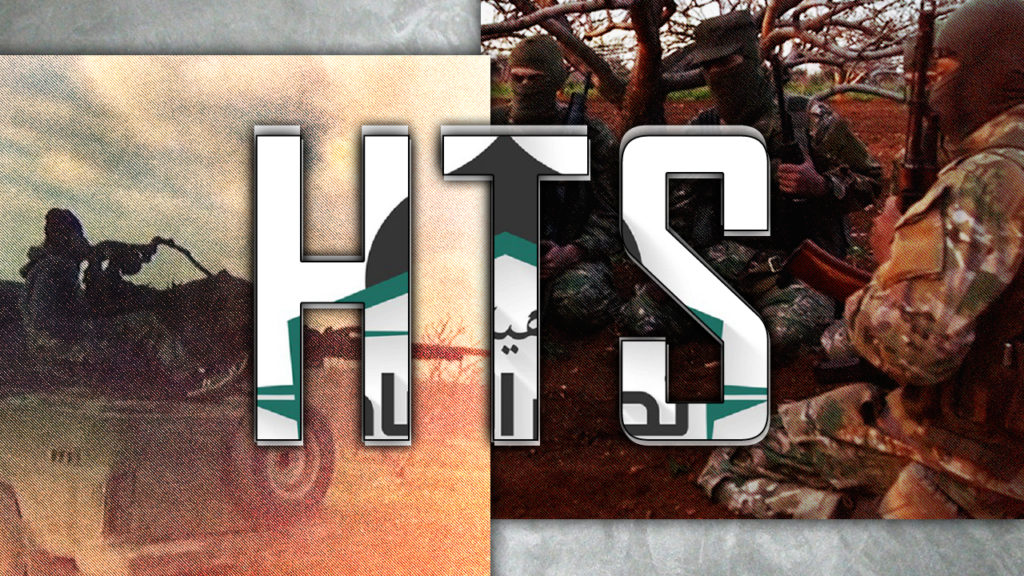
History
Jabhat al-Nusra, originally Jabhat an-Nuṣrah li-ahli ash-Sham min Mujahideen ash-Shām fi Sahat al-Jihad or “Victory Front for the People of the Levant by the Mujahideen of the Levant on the Fields of Jihad”, was founded in January 2012, when military operations between the government forces and groups of armed Syrian opposition were in full force. Jabhat al-Nusra arose with the direct support of the Iraqi cell of al-Qaeda, the “Islamic State in Iraq”, which was at that time led by Abu Bakr al-Baghdadi. At the outset, the leaders of al-Qaeda tried, with the help of their Iraqi ally, to strengthen friendly Jihadist groups in Syria and to unite them into one militant organization.
Abu Muhammad al-Julani, a member of the al-Qaeda branch in Iraq – “the Islamic State in Iraq”, was chosen by Abu Bakr al-Baghdadi to establish an al-Qaeda branch in Syria under the name of the “Al-Nusra Front for the People of Al-Sham.” Abu Muhammed al-Julani entered Syria from Iraq and began a series of meetings in Homs, Ghouta of Damascus, and Deir-ez-Zor. The first cells of Jabhat al-Nusra were established in the northern Homs countryside, western Ghouta of Damascus, and in al-Bukamal on the Iraqi-Syrian border.
On January 23, 2012, Abu Muhammad al-Julani officially announced the establishment of the “Al-Nusra Front for the People of Al-Sham” and small groups began to carry out terrorist acts against civilians, attacked the Syrian Arab Army (SAA) and later began conducting clashes along with the Syrian Free Army (FSA) and ISIS.
In a short time, Jabhat al-Nusra under the leadership of Abu Muhammad al-Julani achieved a number of military successes and gained fame as one of the most efficient units in the north, north-west and northeast of Syria. A pivotal moment occurred at the end of 2012, when Jabhat al-Nusra seized many military facilities, arms and military equipment in western part of Aleppo. After the movement’s detachments were thus strengthened in the western and eastern parts of the province, the main routes of communication between the economic capital of Syria and the Syrian-Turkish border fell under Jabhat al-Nusra’s control, which forced other detachments fighting in opposition to Bashar Assad to establish relations and coordinate their actions with the organization.
Ideology
Jabhat al-Nusra declaratively adheres to the Salafi trend of Sunni Islam. Salafism is an ultra-conservative interpretation of Sunni Islam, which advocates for the lifestyle and faith of the early Muslim community and calls for the return to the traditions of the “forefathers”. The movement rejects all modern religious novelties calling them “forbidden innovation” or “misconceptions”. Salafism necessitates “understanding the religion in the form, in which it was understood by the Prophet and his companions”, “return to the Koran and the Sunnah” in the interpretation of the Shariah provisions. The political division of Muslims is considered by the Salafists as a schism and a violation of Islamic unity (fitna), and because of this belief, the Salafist have a negative attitude towards any secular governments of Islamic countries. They consider the struggle with such governments to be a duty of devotees which lies at the level of religious dogma.
However, it is necessary to distinguish an organization ostensibly built on the principles of Salafism from the religious concept itself. Such organizations consist of hierarchies and of people who often use religious dogmas for personal gain. During the events of the Arab spring, Al-Qaeda saw new political opportunities. Sharp social and cultural contradictions and the inability or unwillingness of the ruling elites to act in the interests of the masses, opened the way for a broad public protest. It is during such situations that al-Qaeda considers these masses most susceptible to pressures to introduce Sharia as the fundamental regulator of public life. Ideally, the impetus for this transition, in the ideology of al-Qaeda should be the society itself, primarily “Ansar ash-Sharia” (supporters of the Sharia).
During the Syrian crisis, the leadership of Jabhat al-Nusra was tasked with Islamization of protests, consolidation of the radical elements of the Syrian society and the creation of an Islamic emirate within territories controlled by Jabhat al-Nusra. A distinctive feature of the “Jabhat al-Nusra” movement from ISIS was that it does not, in theory, attempt to destroy ideologically distinct groups and it does not intend to declare an Islamic state without a consultation with all sides that took part in the military operations against Assad.
The organization does not seek to establish a specific political system. Instead, they seek to overthrow the ruling regime in Syria. Meanwhile, the actual strategy of Jabhat al-Nusra is aimed at fighting for the hegemony over the jihadist movement in Syria, as well as against all secular and nationalist military groups, which, however, does not exclude situational cooperation in the name of “overthrowing Assad”.
The true identity of the movement’s leader, Abu Muhammad al-Julani, remains unconfirmed. The network has his photo, but a number of commanders involved in the negotiations with al-Nusra, note that the face of the leader is always hidden. Iraqi intelligence sources believe that his name is Adnan al-Hajj Ali, but Syrian intelligence sources say he is Osama al-Hadawi, from the town of Shahail, near Deir ez-Zor. Julani is believed to be in his early forties, and was the original founder of Nusra. He joined al-Qaeda in Iraq during the leadership of Abu Musab al-Zarqawi, but was arrested by US forces and held at the US prison at Camp Bucca. He resumed his jihadist activities after his release in 2008 under the leadership of Abu Bakr al-Baghdadi and rose through the ranks of the IS group to become the head of operations in Mosul province.
Main operations and spheres of influence
In the Homs province, Jabhat al-Nusra, along with the al-Qaeda branch in Lebanon, Fatah al-Islam, was one of the most powerful fighting factions alongside the Al-Farouq battalion of the FSA, most of whose militants publicly or secretly joined al-Nusra or Fatah al-Islam.
Jabhat al-Nusra led many attacks in the old Homs area, Khalidiya and Baba Amro between 2011 and 2012, and led a large-scale attack on January 29, 2012 to capture the towns of Rastan and Talbisah in the northern Homs and succeeded in that operation.
In the south of Syria, especially in the Daraa province, Al-Nusra managed to form large forces rapidly, and led the attack on Daraa city on March 14, 2012. Within months, it managed to capture most areas within the city of Daraa.
On July 15, 2012, Jabhat al-Nusra participated in their first attack on the capital city of Damascus along with the FSA and Jaish al-Islam. Within days, they managed to capture most areas of eastern and Western Ghouta along with several districts close to the center of the capital Damascus, such as the districts of Jubar and Al-Maydan. Later the SAA managed to recapture most of these areas.
On July 19, 2012, Jabhat al-Nusra participated in the attack on Aleppo city along with groups of the FSA, the most important of which was the “Northern Storm Regiment”. Within days they managed to capture the eastern area of Aleppo. Later, Jabhat Al-Nusra’s influence expanded in Aleppo. At one point al-Nusra became the sole ruler of opposition-controlled Aleppo, especially after large numbers of the FSA jointed its ranks by the end of 2012 and after it took ISIS out of the city in 2014.
Since 2013, Idlib has become the main center of Jabhat al-Nusra in Syria, and the headquarters of its leadership. Jabhat al-Nusra managed to strengthen its influence further in the beginning of 2014 after the departure of ISIS from the province as a result of a number of disagreements between the groups.
Jabhat al-Nusra participated alongside Ahrar al-Sham in the attack on Raqqa city and managed to capture it on March 6, 2013, 3 days after the attack began. Later, in July 2014, ISIS took over control of Raqqa city. Some members of Jabhat al-Nusra decided to join ISIS while the rest refused to fight it. As a result, al-Nusra withdrew from the city.
From the beginning, Jabhat al-Nusra lead battles against the SAA in the Deir-ez-Zor countryside and in Deir-ez-Zor city. By 2013 al-Nusra seized most of the oil fields in the city’s countryside and along with the FSA, started an illegal oil trade with Turkey.
At the beginning of 2014 with the escalation of ISIS influence in Iraq, al-Nusra began to reduce its presence in Deir-ez-Zor city. After some minor clashes, most of al-Nusra’s fighters withdrew from Deir Ez-Zour to Aleppo and Idlib, while large numbers of al-Nusra foreign militants joined ISIS.
It is believed that on April 6, 2014, the remnants of the FSA detonated a VBIED in the old Homs area with the aim of killing the commanders of Jabhat al-Nusra. The suicide attack was a success, and after the death of the commanders of Jabhat al-Nusra, an evacuation agreement was reached on 2 May 2014.
On March 24, 2015, Jabhat al-Nusra led an attack alongside the US-backed Free Syrian Army factions to capture Idlib city and were able to do so within 4 days. This operation was successful largely due to US support through intelligence and advanced weapons such as the TOW missiles, which reached the hands of al-Nusra militants.
By 14 June 2015, Jabhat al-Nusra and its allies from the FSA had managed to capture the entire western Idlib countryside, including the strategic town of Jisr al-Shughour, and carried out a series of massacres against the pro-government population, expelled even the pro-opposition population from the city, and blew up and demolished most of its buildings.
With Russian military intervention in Syria and the bombing of the positions of Jabhat al-Nusra in Aleppo, Idlib and the northern Homs countryside, both the “moderate” and radical Islamist opposition began to lose strategic initiative in the civil war in Syria. There was a lot of pressure from supporters of Jabhat al-Nusra, Turkey and Qatar, on the leadership of the movement, to disengage from and disavow Al-Qaeda.
After the great advance of the SAA in Aleppo and its success in besieging the eastern districts, Abu Muhammad al-Julani announced on July 28, 2016, the official disengagement of al-Nusra from al-Qaeda and announced the formation of Jabhat Fatah al-Sham. He stressed that the objectives of the al-Sham Front are the same as those of Jabhat al-Nusra, which is the establishment of an Islamic Caliphate in Syria. In an ironic twist, al-Qaeda leader “Ayman al-Zawahiri” praised al-Julani’s decision and declared his support for Jabhat Fatah al-Sham, prompting everyone, including the United States, to consider the move as a formality. Jabhat Fatah al-Sham maintained its terrorist classification in all countries, including the United States, Saudi Arabia and Russia.
On October 28, 2016, Jabhat al-Nusra with its allies from the Free Syrian Army launched a large counterattack south and west of Aleppo city to break the siege of the SAA in the eastern districts; however, the attack failed two weeks later when Jabhat Fatah al-Sham could hold the points it had taken over.
On January 28, 2017, Jabhat al-Nusra changed its name once again, this time to Hayat Tahrir al-Sham (HTS). On March 21, 2017, it launched the offensive of the northern Hama countryside along with the FSA factions supported by the CIA, most notably are Jaish al-Izza, Jaish al-Nasr and the Idlib Free Army. These were considered the most important allies of Jabhat al-Nusra in Idlib and a major source of its weapons. The aim of Hayat Tahrir al-Sham’s advance was to recapture the settlements it lost in 2016. The active phase of fighting continued until the end of April 2017. For more than a month, neither side had a decisive advantage, and in fact, prolonged fights began, during which a number of settlements repeatedly changed hands.
Having accumulated enough reserves in the area and with the support of the Russian Aerospace Forces, the SAA launched a counter-offensive against the positions of the Islamists in mid-April and recaptured the territories it had lost at the beginning of the month.
On September 19, 2017 HTS, along with the units of the Turkestan Islamic Party and the FSA, once again made an attempt to advance on the position of the SAA in the northern part of the province of Hama. The aim of HTS was to take revenge for their defeat in the April 2017 offensive. While fighting went back and forth, with settlements being occupied by both sides several times, the struggle continued until the end of September and ended in a stalemate, with neither side able of winning a convincing victory, with each side remaining in their original positions. As time went on, the situation in the province was further complicated by the appearance of the IS militants in early October 2017, as a result of which armed conflict erupted between all opposition groups in the region, which continues at varying degrees of intensity to this day.
In late November and early December, the SAA carried out a number of operations against HTS in northern Hama and southern Aleppo and achieved some success creating the prerequisites for a push towards the Abu al-Duhur air base. Taking the air base under control will allow government troops to expand the buffer zone adjacent to the road going to Aleppo and cut the front line to the west of Khanaser.
The intensification of the activities of the Russian Air Force in the region in the first half of December 2017 gives grounds to conclude that the preparation of the SAA for an attack on the position of radical Islamists is underway. This offensive is likely to have the goal of delivering a decisive blow to HTS, since it currently presents a greater threat than the IS.
In January 2018, the SAA liberated a large area from HTS in southern Idlib advancing towards the Abu al-Duhur air base.
At the present time (January 2018) the main area of deployment of the armed units of HTS is in the province of Idlib. In addition, the units of Jabhat al-Nusra partially occupy the north-eastern part of the province of Hama, and the western and south-western part of the province of Aleppo. After al-Nusra finally broke off relations with Ahrar al-Sham, one of the most battle-worthy movements in Syria, they gained control of practically the entirety of the province of Idlib.
Structure
The movement avoids publications concerning the structure of the organization, the real names of commanders of its large units and the work of its main bodies. It is known that the advisory body Majlis al-Shura, consisting of 12 people, is at the head of the movement. Based on information surveyed and interviews, HTS operates through eight divisions, namely military, security, services, religious law, courts, media, finances, and politics. For each of these divisions, there is an office for the Shura Council.
In fact, since its inception, Jabhat al-Nusra / HTS was a coalition of armed formations. As a result of the rebranding conducted in January 2017, HTS includes such groups as “Jabhat Ansar al-Din”, “Nur al-Din al-Zenki”, “Liwa al-Haqq”, and “Jaysh al-Sunna” .
According to information from the organization’s website, the new formation also includes groups: Tawhid Wal-Jihad, Ar-Rashid, Ibn Taimiyya, Liva Abbas, Sukur al-Izz, Al-Sahabat, Kuwafal Shuhada, Usud al-Harb, Liva Ahrar al-Jabal and others. Several large groups withdrew from the Ahrar al-Sham and swore allegiance to Hayat Tahrir al-Sham: Surya al-Aqsa, Liva Ahrar al-Jabal, Ansar Homs, and Kurdish paramilitary groups which together comprised of more than five thousand soldiers. The process of breaking and mending relations is constant and there is an alternate structure of the movement as of April 2017.
The auxiliary functions are performed by Qism al-Ighatha (Department of Relief), Idarat al-Khidarat al-Ammah (Public Services Administration), Idarat al-Manateq and al-Muharara (Liberated Districts Administration). In the so-called “liberated areas” where Jabhat al-Nusra has filled the power vacuum, it has created, along with other jihadist organizations, a system of justice and law enforcement called the Shari’ah Authority (Al-Hay’ah al-Shar’iyyah). The Shari’ah Authority operates its own police force called the Shari’ah Authority Police (Shurtat al-Hay’ah al-Shar’iyyah).
The strategy of the Salafists from al-Qaeda and its allied groups is the creation of small-scale quasi-states called “Islamic Emirates” or “Shariah zones.” The size of the zones varies and can equate to the size of a tribe, a city, a village or a city quarter. These are territorial enclaves on the territory of the state, which are not controlled (or not completely controlled) by the official authorities. The enclaves do not operate under the laws of the state, but under what the Salafists declare to be “Sharia law”. Some of these enclaves are often called “Shariah zones”.
The military structure of the groups varies depending on the geographical location of the fighters in Syria. In Damascus, where the partisan tactics of fighting were employed, the divisions were divided into separate detachments, while in Aleppo, military operations were conducted by full-fledged military formations, consolidated into brigades, regiments and battalions.
A distinctive feature of the system which recruits units and works to spread the ideas of radical Islam is the fact that the movement actively recruits groups of militants, formed on the basis of national and religious grounds. There are units of militants from Ajnadal-Kavkaz, Caucasus Emirate (natives of Chechnya), and the Turkistan Islamic Party in Syria (Uyghurs and natives of the Central Asian countries of the former USSR). From a military point of view, this is convenient for management and interaction, since there is no language barrier between the fighters and the commanders. Upon returning to their host country, such a detachment is practically a ready-made cell with combat experience, in which each member knows one another, trusts his commander and is ready to act in the interests of the parent organization. Western experts estimate that in less than 2 years of its existence, there were almost 5,000 people from 60 countries who fought for the movement.
The core military formations varied in their numbers and at times amounted to up to 30,000 people. Together with the added paramilitary groups of like-minded people, the total number reached 70,000. At present, the number of formations is smaller and the core of the grouping, according to the estimates of the General Staff of the Russian Armed Forces as of August 2017, consists of up to 15,000 men. Together with units of radical Islamists from other groups, it amounts to a total of 25,000.
The armament of the movement consists of small arms, artillery and tanks seized from the SAA, from various anti-Assad forces, and equipment received from foreign sponsors from the Gulf countries through the jihadist movements with direct or indirect US assistance. In addition, according to reports, the movement has chemical weapon reserves.
In December 2012, at the SYSACCO chemical production plant (30 km east of Aleppo), the al-Nusra units captured about 200 tons of chlorine. In May 2013, Turkish special services arrested insurgents of al-Nusra on the border with Syria for attempting to acquire sarin components.
An indicative example of direct or indirect U.S. support is the use of the American ATGM BGM-71 TOW by the al-Nusra forces. These units were transferred to the armed formations by the “moderate” opposition, for example, FSA units (Harakat Hazzm). Subsequently, the ATGM systems were either voluntarily supplied, or forcibly taken from other groups by HTS. At the end of September 2015, the “30th division” of the opposition, supported by the US government, surrendered to the units of al-Nusra and handed over a large number of ammunition, small arms and artillery weapons and a number of light vehicles. The same happened with the FSA’s “13 Division” in March 2016, which directly received American weapons.
Rebranding
At the end of June 2016, the leaders of the Syrian opposition (primarily from Ahrar al-Sham) conducted negotiations and consultations in light of Russia’s actions against al-Nusra, which also threatened other groups. As a result of such meetings in the western part of the province of Aleppo and in Idlib, it proposed to either dissolve al-Nusra into a new association, which would be headed by Ahram al-Sham or to tear it away from al-Qaeda. The situation was such that a third of al-Nusra, first of all the ethnic Syrians, were ready to break with al-Qaeda and join a new group.
Then the leadership of al-Nusra undertook a rebranding, which, on the one hand, was to save it from a split, and on the other, in the eyes of the Syrians, to root it in the Syrian revolutionary movement. As a result, al-Nusra became known as Jabhat Fatah al-Sham (Front of the Conquest of Syria) and proclaimed its formal departure from al-Qaeda. After this, the leadership of Jabhat Fatah al-Sham attempted to unite with Ahrar al- Sham and other factions; however, this would have led to the inclusion of all participants of this union on the list of internationally recognized terrorist groups. As a result, the attempt to create a “Syrian Islamic Commission” at the end of 2016, in which A. Giulani wanted to play a key role, failed.
There are other reasons why al-Nusra began to act under a new name. First, it allows sponsors and leaders of the movement to avoid sanctions, since al-Nusra periodically gets on the “Consolidated List of Legal Entities Affiliated with or Associated with al-Qaeda Organization”, compiled by the UN Security Council. Updating the list, in light of objective reasons, is not keeping up with the evolution and expansion of al-Qaeda and its subsidiaries.
Secondly, it is more convenient for Western special services to deal with groups not listed on the list of the UN Security Council and/or on the American or European list of terrorist organizations. Instead, they prefer to deal with “rebels” who declared their secession from al-Qaeda.
It is important to note that according to a number of Muslim Sunnite clerics, statements about breaking of the relationship (violation of the vow) are punishable by death, according to the practice of jihad. Despite this, no actions were taken against Giulani and his subordinates by the leadership of al-Qaeda. This indicates that the separation of al-Nusra and al-Qaeda is a formality and reflects the desire of the parent organization to maintain its influence in Syria, even if in such a way.
On January 28, 2017, Jabhat Fatah al-Sham conducted another rebranding and was named Hayat Tahrir al-Sham (Organization for the Liberation of the Levant). This coincided with increased pressure on opposition groups in Syria and with a turning point in the Syrian civil war – the liberation of Aleppo. The military defeat near Aleppo, where Jabhat al-Nusra lost the bulk of its most trained fighters and much of its technology, was a turning point in reducing its influence. However, in its ideology and structure, it continues to remain the same al-Qaeda in Syria.
Relations and relationships with other groups
Military successes in the first years of the civil war declined to the point where, starting from 2014, the movement started to systematically weaken and accept “moderate” military groups, which represented secular and national opposition.
In November 2014, Jabhat al-Nusra attacked the “Syrian Revolutionary Front”, a large association that fought under the banner of the FSA and the National Coalition of Syrian Revolutionary and Opposition Forces and received assistance from the United States and its allies. Its leader, Jamal Ma’ruf, was forced to flee to Turkey. Then the jihadists attacked the camps of the movement “Harakat Hazzm”, which the US planned to thoroughly train and supply with weapons and which many American analysts viewed as the most acceptable variant of the moderate opposition.
As a result, Jabhat al-Nusra at the end of October 2014, seized the base of the Hazzm Movement in Idlib, and in January 2015 displaced it from Aleppo, effectively forcing it to dissolve and merge with other militant groups. At the end of September 2015, al-Nusra attacked the 30th division of the FSA, forcing some of the fighters along with their arms to cross over to their side. The jihadists particularly intensified the fighting against the “moderate opposition” after the US and its allies began to conduct air strikes at the end of September 2014, not only directed against the positions of the IS, but also targeting “Jabhat al-Nusra.” Thus, the movement played an important role in the failure of the US project to create a “secular military opposition” in Syria.
Since 2012, the FSA’s relations with Jabhat al-Nusra have been excellent. The FSA and the US-backed factions supported Jabhat al-Nusra financially and most importantly with the weapons supplied to them by the CIA and Turkey. However, al-Nusra did not hesitate to turn its weapons against the FSA or hesitate to eliminate any group that opposed its will, especially in the province of Idlib and in Aleppo countryside.
Currently, Jabhat al-Nusra is fighting against several factions of the FSA, most notably its recent battles against Jaish al-Islam in the area of Ghouta in Damascus.
As for the relationship of Jabhat al-Nusra with Ahrar al-Sham, one of the largest groups in the north of Syria, while Ahrar al-Sham obey the orders of Jabhat al-Nusra and treat its leadership with respect, Jabhat al-Nusra takes firm action with Ahrar al-Sham and has not hesitated to use its weapons against it in 2017. It has even issued a statement calling the militants of the Ahrar al-Sham “infidels” after clashes with the 46th regiment in the northwest Aleppo countryside. However, the militants of Ahrar al-Sham, despite a number of them being killed or wounded by al-Nusra tanks, refused to return fire on the al-Nusra militants.
It is also believed that Jabhat al-Nusra pushed Ahrar al-Sham into a losing battle in Aleppo in order to weaken it. The final gulf between the two-armed movements formed in July 2017. The reason for the conflict, in addition to purely ideological differences, was the fact that the Ahrar al-Sham group controlled the Bab al-Hawa border crossing on the Syrian-Turkish border, which was an important transport corridor, as well as a source of finance and the replenishment of the military formations of the “moderate” opposition. Perhaps the most important reason for the conflict was the issue of control over the “civil administration” of the province of Idlib.
Control over the border crossing meant not only power and authority over movement in the region, but also the possibility of collecting taxes. With declining support from abroad, tax collection from the local population and businesses is the main source of financing for most militant groups. The initial pretext given for the conflict was the dispute over the use of the Ahrar al-Sham’s banner of the Syrian revolution. During the clashes on both sides, 77 people were killed, after which a truce was called. The members of Ahrar al-Sham, who did not want to join Hayat Tahrir al-Sham, left the province and, as part of the convoy, were relocated to the south of the province of Idlib and the neighboring province of Hama.
The disagreement of Jabhat al-Nusra with ISIS began at the end of 2013, when al-Nusra separated its link to the Islamic State in Iraq – now ISIS – and the controversy increased in 2014 when Abu Bakr al-Baghdadi announced the formation of the Islamic State in Iraq and Syria, the separation from al-Qaeda and the establishment of the Islamic Caliphate. Al-Julani rejected Abu Bakr’s allegiance to the Caliphate. The basis of the controversy is that Jabhat al-Nusra believes that the Caliphate should be established after capturing the whole of Syria and Iraq, while ISIS believes that the Caliphate should be established in any area under its control. Although there was a great deal of talk about clashes between the two parties, clashes were rare, short-lived. Jabhat al-Nusra withdrew from Deir-Ez-zour and Raqqa, while ISIS withdrew from Aleppo and Idlib, with large numbers of militants from Al-Nusra changing their allegiance to ISIS.
Al-Nusra developed a difficult relationship with the movement of Nour al-Din al-Zenki (numbering 7,000 militants in 2017). In 2015 and 2016, both sides participated in clashes against each other; however, in January 2017, the Nour al-Din al-Zenki group in Idlib joined with al-Nusra. In the second half of July 2017, there was a conflict between the leadership of Nour al-Din al-Zenki and Hayat Tahrir al-Sham because of a statement, made by an authority figure from Nour al-Din al-Zenki, saying that there is no Sharia rule in the territory controlled by Hayat Tahrir al-Sham.
Since HTS strategy is aimed at cooperating with local Islamist organizations that recognize the main goal of establishing an Islamic state and Sharia in Syria, such an approach does not allow Syrian Islamist groups, including Jaysh al-Islam, to oppose Al Qaeda in Syria in the face of Jabhat al-Nusrah / HTS. Both groups profess Salafi Islam and both groups raise the issue of overthrowing the existing power.
According to a former leader of Jaysh al-Islam, Muhammad Zahran Allush, there was a fraternal relationship between his organization and Jabhat al-Nusra, and the existing insignificant ideological differences could be resolved through the discussion and application of Shariah norms. In his interview, Zahran Allush said that he personally met with one of the leaders of “Jabhat al-Nusra” Abu al-Qahtani, and found no difference between the Shari’ah of Jabhat al-Nusra and the Shari’ah of “Jash al-Islam”.
In 2013, Jaysh al-Islam, together with Jabhat al- Nusra, organized a bloody massacre in the city of Adra, directed mainly against minorities, most notably the Alawites. After the death of Muhammad Zahran Allush as the result of an airstrike conducted on December 25, 2015, the new leadership of Jaysh al-Islam soon began to disagree with the leadership of Jabhat al-Nusra. This took place in light of the fact that the Islam Army has taken a strong stance in favor of negotiations, with Zahran Alloush’s cousin and close companion, Mohammed Alloush, heading the opposition diplomats in Geneva.
Participation of various groups of “modern opposition” in the Syrian settlement under the patronage of Turkey, Iran and Russia led to a “split” in the ranks of these groups, which significantly weakened their position in the country. In this respect, the case of the Jaysh al-Islam movement can serve as a prime example. Since the movement formally participates as a group and represents the “moderate opposition”, it had to sever its ties with HTS. In practice, the situation is quite different. Jaysh al-Islam has several regional branches: Eastern Ghouta, Eastern Qalamoun, Daraa, and Idlib.
Eastern Ghouta – Jaysh al-Islam, HTS, Ahrar al-Sham and al-Rahman Corps are the most influential groups in this area near Damascus. All of them, in spite of some tensions, actively cooperate against the SAA. The peak of Jaysh al-Islam’s participation in the fight against HTS was when the group allegedly did not come to the aid of HTS during the battles in the area of Jobar (Guta district). However, the truce in the region is very controversial. Not long ago, Ahrar al-Sham conducted a series of major attacks against the army in the area south of the Duma – the area of the Army Armored Vehicles Base.
Eastern Qalamoun – the militants did not show much activity here and before negotiations in Astana, there was a truce. In fact, Jaysh al-Islam is forced to share resources and interact with HTS in this region.
As a result, it turns out that the leaders of this “moderate” opposition did not actually do anything of substance in constructively participating in the Astana process and limited themselves exclusively to vague formal gestures (such as sending delegations and making loud statements in the media).
Therefore, one can make the disappointing conclusion that the real influence of the Astana format on the situation in Syria is of much significance than originally thought, and the format is not very effective. Statements of the high-ranking officials of the Russian Foreign Ministry about successful negotiations are not accurate. To date, the moderate opposition does not want peace. It continues fighting, repeatedly delays negotiations, and awaits the intervention of other countries. The only language that the radical and moderate opposition understands in this case is the language of force.
The Idlib de-escalation zone
Separately, it is necessary to focus on 4 zones of de-escalation in Syria, the boundaries of which were determined by the agreements in Astana on September 16, 2017. The agreement established the boundaries of de-escalation zones, where, as agreed, military operations between government forces and forces of the armed opposition groups which have already joined the truce or will join it in the future, are to be halted. To prevent incidents and clashes between various sides along the borders of zones, security bands were created. They include observation posts and checkpoints for the movement of unarmed civilians, delivery of humanitarian aid and facilitation of economic activities. The work of the checkpoints and observation posts, as well as the management of the security zones, is carried out by personnel from Russia, Turkey and Iran. This begs many questions, chief among them: Why is there is no mention of withdrawal of heavy weaponry nor the surrender of weapons inside the zones?
The most extensive zone of de-escalation is located in northern Syria. It contains the province of Idlib, as well as the bordering northeastern parts of the province of Latakia, the western provinces of Aleppo and the northern regions of the province of Hama. It is worth noting that the province of Idlib is one of the most problematic. It is here that the main forces of the terrorist organization Jabhat al-Nusra / HTS are based, and it was here that the Syrian authorities brought militants and members of their families from Aleppo who agreed to lay down their arms in exchange for freedom. In light of this, it is necessary to mention who will facilitate the process of de-escalation in this zone.
According to Turkish President Recep Erdogan, Russia will provide security outside of Idlib while Turkey will ensure security inside of Idlib. Turkey had the right to deploy in Idlib, via a small group of troops, whose task is to organize observation posts, but they are not to form a full-fledged army group. However, by October 13, 2017, about 50 units of armored vehicles and 200 servicemen crossed the Turkish-Syrian border. The pro-government Turkish newspaper Yeni Safak claimed that 25,000 Turkish soldiers were mobilized to carry out military operations in Syria.
Thus, in the northern part of the Idlib province, the so-called free zone from Hayat Tahrir al-Sham is created under the auspices of Turkish forces. The area will host the forces of the “moderate” opposition and Turkish troops. In the south, the province of Hama will host Russian observers. The forces of Hayat Tahrir al-Sham will be moved to a zone located in the middle. This way HTS will be deprived of any possibility of reaching the border.
Meanwhile, in the zones controlled by radical Islamists, Hayat Tahrir al-Sham blames the “moderate” opposition, for abandoning the war against the Assad government and entering into peace agreements. At the same time, the movement, aside from fighting battles against the SAA, is actively engaged in attacks against factions of the “moderate” opposition. Naturally, this caused a split among HTS itself and lead to the creation of “Nur al-Din al-Zenki” and “Jaysh Al-Ahrar.” Al-Muhaysini and other well-known sheikhs left the alliance, saying that the original idea of ”Hayat Tahrir al-Sham” was to unite the rebels, and instead, it has been engaged in a war against them.
Financing and communication with external sponsors
“Jabhat al-Nusra” is considered to be one of the most well-equipped and well-armed formations fighting against government troops. According to some estimates, before the conflict with the Islamic State (January 2012-April 2013), half of ISIS’ budget was sent to Jabhat al-Nusra. At the same time, the group received significant funds from Syrians with sympathies for radical Islam. From April, 2013 to the end of 2014, the budget of the movement was largely replenished by the illegal trade of oil acquired from the east and northeast of Syria. When the oil prices dropped, IS exerted control over these oil fields, and the movement lost this source of financing.
From the end of 2014 until the present, al-Nusra’s main source of financing comes from external sources. Most of the funding comes from the charitable Salafi foundations in Kuwait, Qatar, Saudi Arabia, and from high-ranking clerics and wealthy businessmen who sympathize with the ideas of Salafi Islam of Jordan and Turkey. Normally, these individuals do not advertise their aid to armed forces under the control of al-Qaeda. Hamid bin Abdallah al-Ali is an example of a person who sympathizes with the ideas of the movement. He is an influential Salafi cleric in Kuwait. He has facilitated the transfer of funds, weapons, supplies and fighters to and from Syria for Jabhat al-Nusra, sometimes using Kuwaiti students as couriers for the materials.
Shafi Sultan Mohammed al-Ajmi is a native of Kuwait. He is included by the UN Security Council in the list of persons sponsoring al-Qaeda and related organizations. Together with his assistants, he raised funds and gathered weapons under the pretext of charity. He personally delivered the collected funds to various groups, including Jabhat al-Nusra.
Abd al-Rahman al-Nuaimi is a Qatar-based terrorist financier and a facilitator who has provided money, material support and conveyed communications to al-Qaeda and its affiliates in Syria. In 2013, Naimi ordered the transfer of nearly $600,000 to al-Qaeda via al-Qaeda’s representative in Syria, Abu-Khalid al-Suri.
Ali bin Abdallah al-Suwaidi is the general manager of Mu’assasat ‘Eid bin Muhammad Aal Thani al-Khayriyya (the Eid bin Muhammad al Thani Charitable Society). In this role, Ali al-Suwaidi manages the budget and directs the activities of the charity, including its work with organizations that have been tied to al-Qaeda. According to media reports, Ali al-Suwaidi worked with US sanctioned al-Qaeda financier Abd al-Rahman al-Nuaimi to transfer funds to jihadist militants in Syria, including al-Nusra.
Social networks are another important source of financing. Recruiters in social networks are urging a transfer of money for the aid of militants fighting in Syria. Given that financing terrorism is prosecuted in many countries, the fee is made in disguise to a bank account of an intermediary. The sponsors transfer sums not large enough to attract the attention of bank employees and law enforcement officials. The intermediary then sends money to a foreign bank – to the owner of a money transfer office in Turkey or Jordan for example. He informs his colleague in Syria that the money has come, provides the name of the recipient and gives a password. Money is given from a cash register. Such transactions leave no traces and are hidden from those who are fighting to interdict and disrupt the funding of terrorism.
In addition, the group continues to actively engage in kidnapping, extortion, and collection of taxes from citizens and businesses in controlled areas.
The group also developed a scheme to collect funds from small and medium-sized businesses in territories which are not directly controlled by HTS, but territories that host enough HTS emissaries and combat groups to the extent that those groups can facilitate racketeering.
Al-Qaeda, as the lead organization which promotes the idea of ultra-radical Islam, is in financial crisis. It receives less and less financing from sympathetic individuals and from so called charitable foundations, to carry out its terrorist activities. This necessitated some optimization of costs. The movement had to change its tactics and constructed a new model, aimed at interacting with self-sufficient extremist organizations which do not require support from the lead organization. In this format, al-Qaeda plays a dual rule. First, it acts as a military adviser and mediator for radical Islamist groups. Secondly, it sends authoritative clergymen to various war zones. Al-Qaeda also provides local groups with their own schemes for the transfer of funds, facilitates the creation of enterprises, and provides information to support local organizations. An example of such cooperation is the relationship between al-Qaeda and al-Nusra.
Loss of influence after the battle for Aleppo and the role in Syria after ISIS
When Aleppo was captured by government troops in late 2016, the appearance of HTS signaled a new phase of restructuring of the radical opposition in Syria. Yet another attempt to rebrand was nothing more than a formal effort by al-Qaeda to dissociate itself from its supporters in Syria, as well as its desire to withdraw moderate Islamists from the negotiation process on the future of Syria in Astana. The leadership of HST wanted to overpower and if that failed, to destroy the entities that are part of Ahrar al-Sham. They sought to become the single center of Sunni militarism in Syria. This caused a split among the opposition, and the most radical of its representatives moved to the newly created Hayat Tahrir al Sham, which marked the beginning of a conflict between the two largest groups in Idlib. This was also done to preserve logistics and infrastructure, which could be used to support the organization: border crossings, transformer stations, and roads (which allowed for the transfer of revenue).
To support its strategy, HTS operates through four main bureaus: General Administration of Services; Military and security operations wing; Dawah and Guidance Office; and Sharia courts.
There are 156 Local Councils operating in the Idlib province with the following administrative divisions: 9% City Councils, 30% Town Councils, and 61% Municipal Councils. Of these Local Councils, 86 operate in HTS-controlled areas—14% City Councils, 39% Town Councils, and 47% Municipal Councils.
In August 2017 a conflict arose between the local city council of Idlib and the General Administration for Services, which is connected with HTS. The latter began the process of making unilateral decisions. The General Administration for Services issued circulars for local councils, informing them that it was the only body with the authority to monitor their work and required the transfer of the relevant council departments to the specialized agencies of the movement. In particular, this affected services which supply water and bread as well as transport. The city council rejected the request and on August 28, 2017, HTS units stormed the city council building of Idlib and ordered all those who disagreed with the policy to leave the building. In this way radical Islamists gained control over administrative services of the city. There is a desire of the HST to launch its own project of “civil administration”, in order to sabotage the work of elected local councils, and to exert pressure on the local population, and, of course, to receive financial means to continue its activities.
The process where smaller formations join or leave the grouping is not static. On November 14, 2017, representatives of the group “Ajnad al-Sham” announced through twitter that they are joining Hayat Tahrir al-Sham. Ajnad al-Sham militants participated in earlier clashes with the Syrian Arab Army in western Aleppo, in the north part of the province of Ham and in the province of Idlib. In late October, there was information that the central division of the FSA, Faylaq al-Sham, and Jaysh al-Izza also joined Hayat Tahrir al-Sham.
Hayat Tahrir Al-Sham also conducted operations against smaller militant groups, who then sought support from Ahrar al-Sham. For instance, the group “Jash Mujahideen” was attacked by terrorists of Hayat Tahrir al- Sham in January 2017. At this time the radical Islamists seized warehouses with weapons. After that, part of Jash Mujahideen’s forces were forced to join Ahrar al-Sham, while the other part joined HTS. Attacks of radical Islamists were also inflicted on other small factions, which were associated, first of all, with the struggle for arms and sources of financing.
Be that as it may, year after year HTS leadership adamantly follows its goal – the unification of all jihadist organizations in Syria under its leadership and the construction of the emirate. Radical Islamists are strongly established in the province of Idlib, and will do all they can to prevent the creation of a de-escalation zone, such as the one that was agreed to during the sixth round of negotiations in Astana. Even if the government army succeeds in surrounding and destroying the remnants of HTS formations, their sleeping cells will continue to exist and will wait for a convenient moment to strike. This movement is attractive to those few people who share the ideas of radical Islam, those who consider the negotiations in Astana and Geneva a betrayal of the people of Syria, and those who are ready to continue the war to the end in a country torn apart by longstanding conflict.
Conclusion
The following conclusions and analysis can be drawn from all the information presented thus far. After the defeat of the IS in Iraq and Syria, the most effective group that stands to oppose Assad’s regime remains Hayat Tahrir al-Sham. This movement has the necessary number of trained militants in its ranks to confront the government army, it has a rather positive image when compared with the IS, and advocates the idea of opposing “the betrayal of the interests of the people of Syria.” Meanwhile, the conflict between the factions within the movement itself, the conflicts with other armed groups, the reduction of logistical support, and problems with financing, all lead to a gradual degradation of HTS. We can conclude that to overcome these problems, the leadership of the movement may hold another re-branding. This conclusion is based on the fact that, at a turning point in its existence, al-Nusra / HTS is able, in words, to abandon the ideas of radical Islam in order to preserve their ability for an armed struggle, and to establish itself as a legitimate and independent force in the ongoing civil war . It seems that there is a desire on the part of HTS to become a Sunni version of Hezbollah.
Simultaneously, the United States, Israel and Saudi Arabia view the movement as a group with which they can conduct a dialogue. For the United States at the moment, this is the only group that is capable of fighting against the SAA. It was with the help of Saudi Arabia that al-Nusra / HTS began its existence and it is only logical that the leadership of the monarchy will continue to provide financial assistance and weapons to HTS in the future. For Israel, HTS is a key ally in weakening the regime of Bashar Assad, as well as the Lebanese Hezbollah movement. There is no doubt that there is a plan between Saudi Arabia, the United States and Israel regarding the overthrow of the existing Syrian government after the defeat of the IS. This is evidenced by the trip of President Trump to the Middle East in the fall of 2017.
The clashes and reluctance to compromise with the moderate opposition, continued conflict with the increasingly capable government army, and the never ending struggle for resources – have all reaped poor results for the group, and highlight the poor choice of strategies adopted by HTS thus far. This additionally indicates that the internal affairs of the organization are far from being in order. Without external help, HTS will not be able to confront, for any extended periods of time, the SAA and the Russian Aerospace Forces. However, if the global and regional powers concerned fail to agree on an intent and framework to establish a peaceful life in the country, the supporters of radical Islam will once again fill the vacuum thus abdicated to them. Another round of violence will become inevitable. The process of the formation of armed groups of radical Islamists, if not prevented, will lead to a constant struggle with the government forces, and internal struggles for subordination of one group to another. In this case, the civil war in Syria will not come to an end anytime soon.



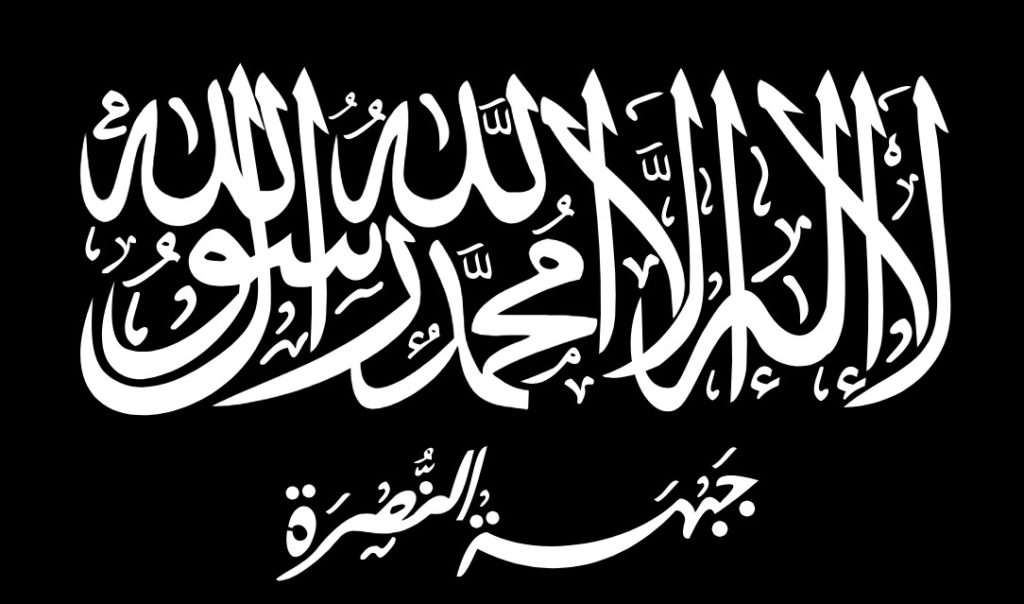
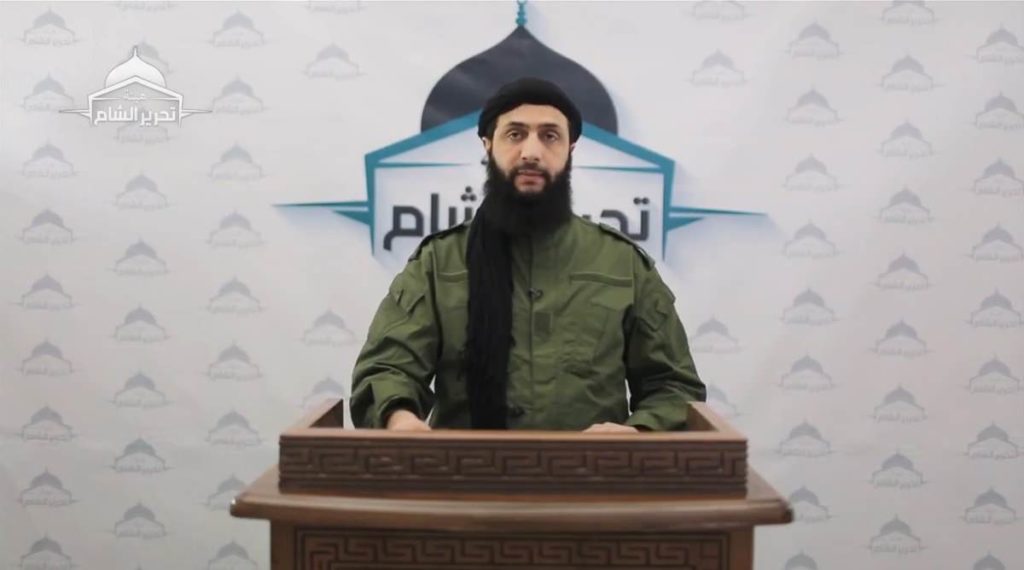
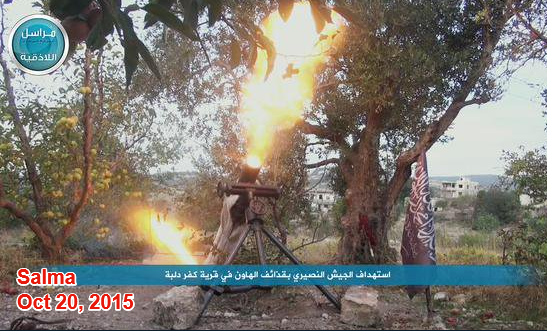
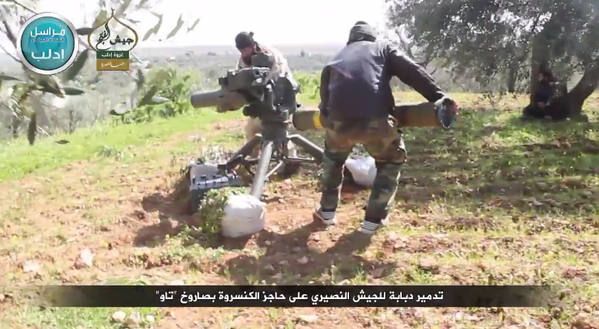
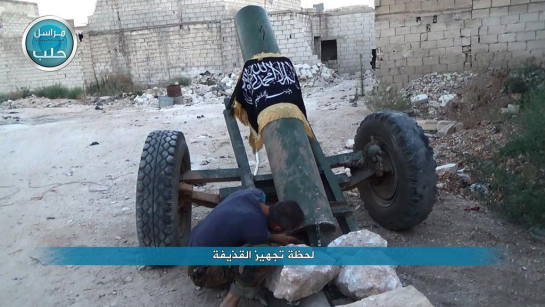
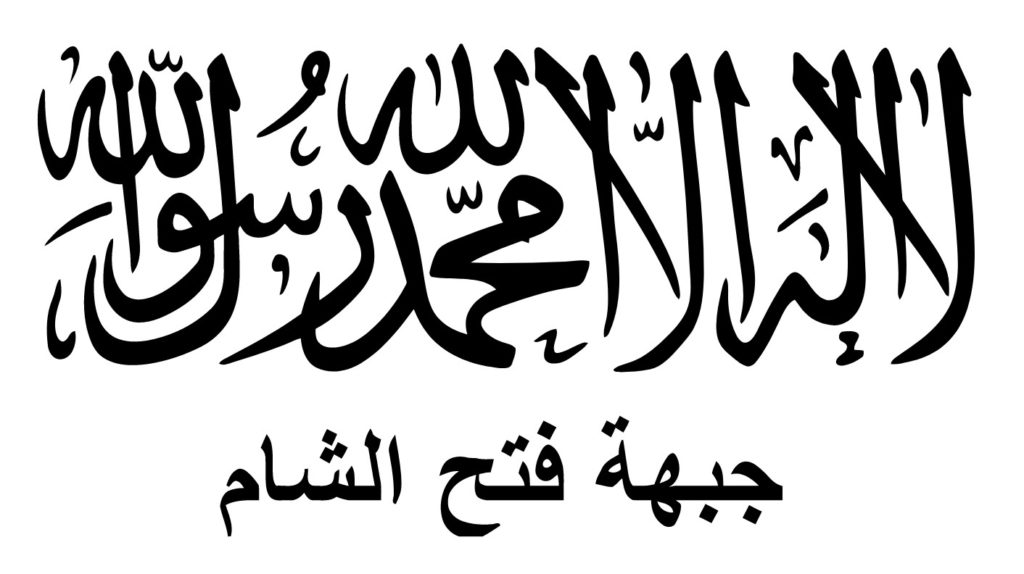
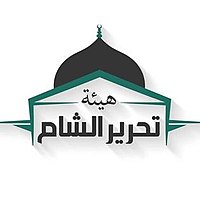
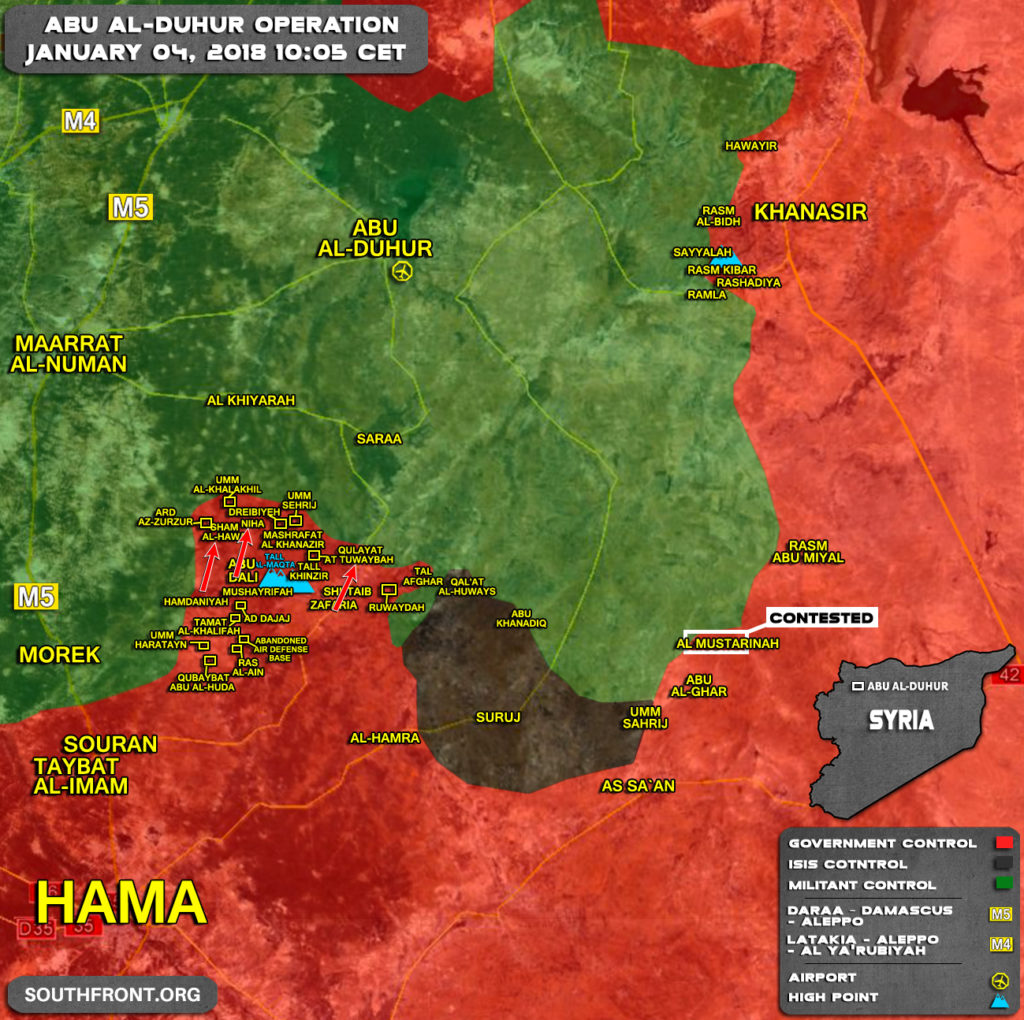
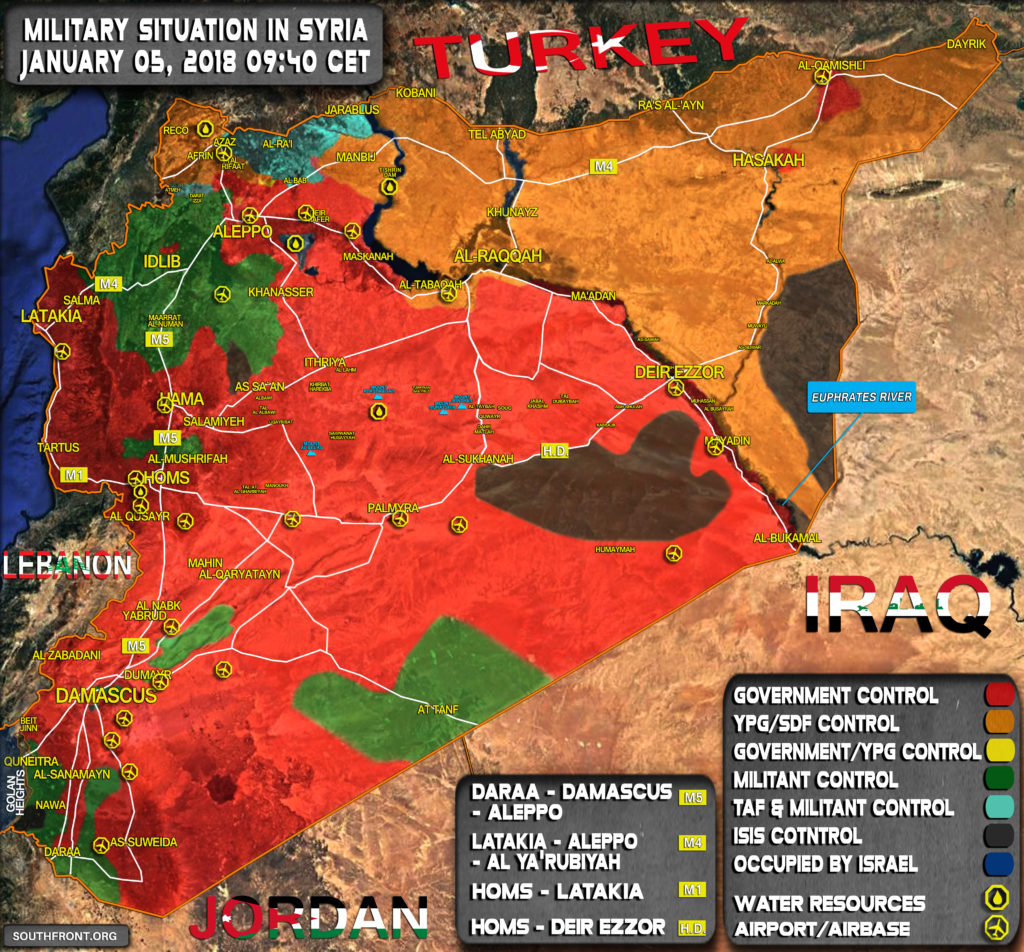
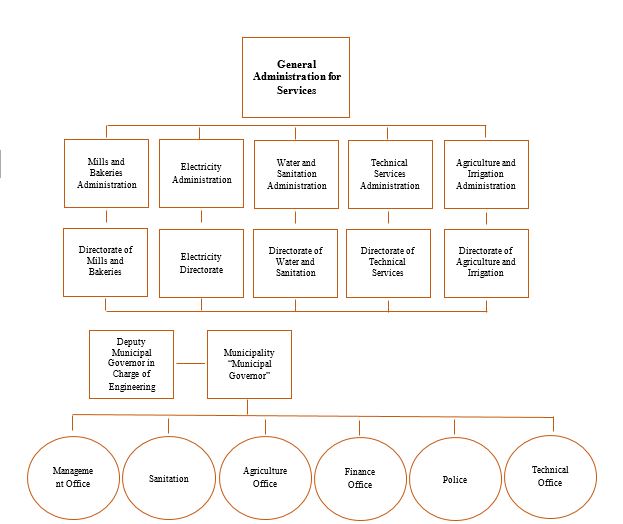

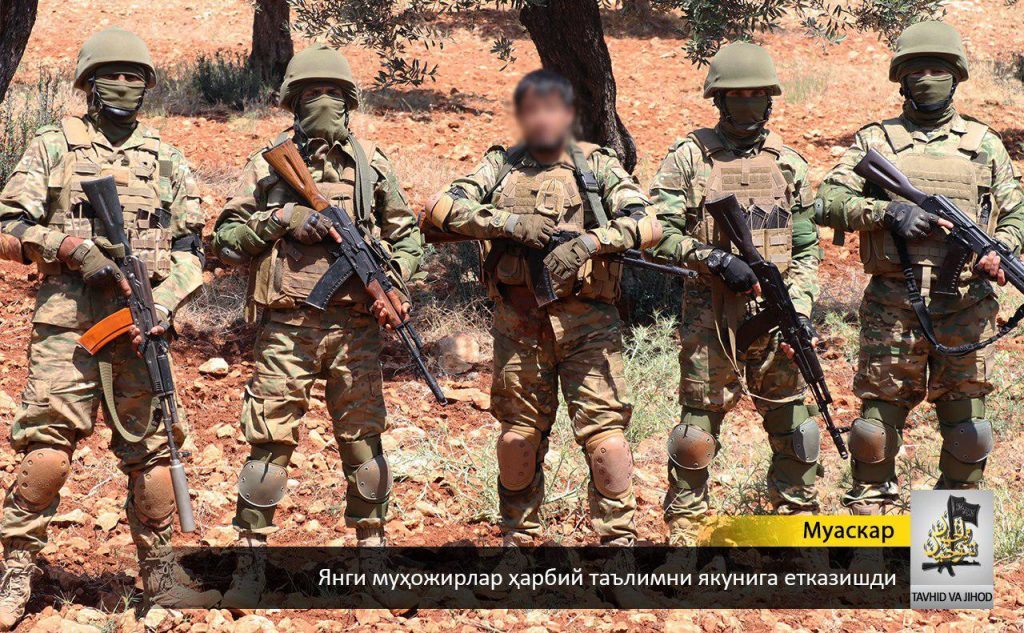
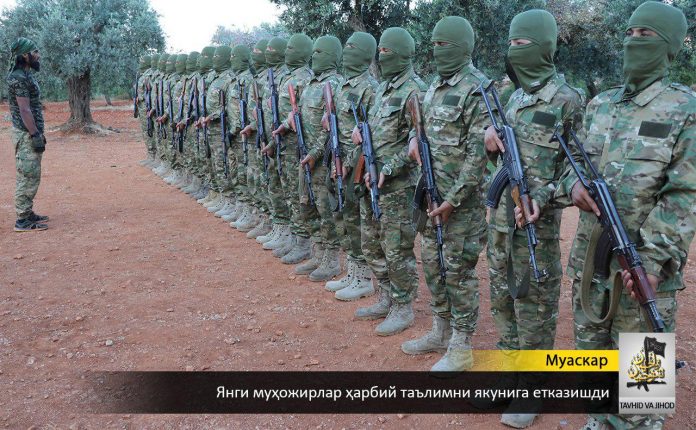
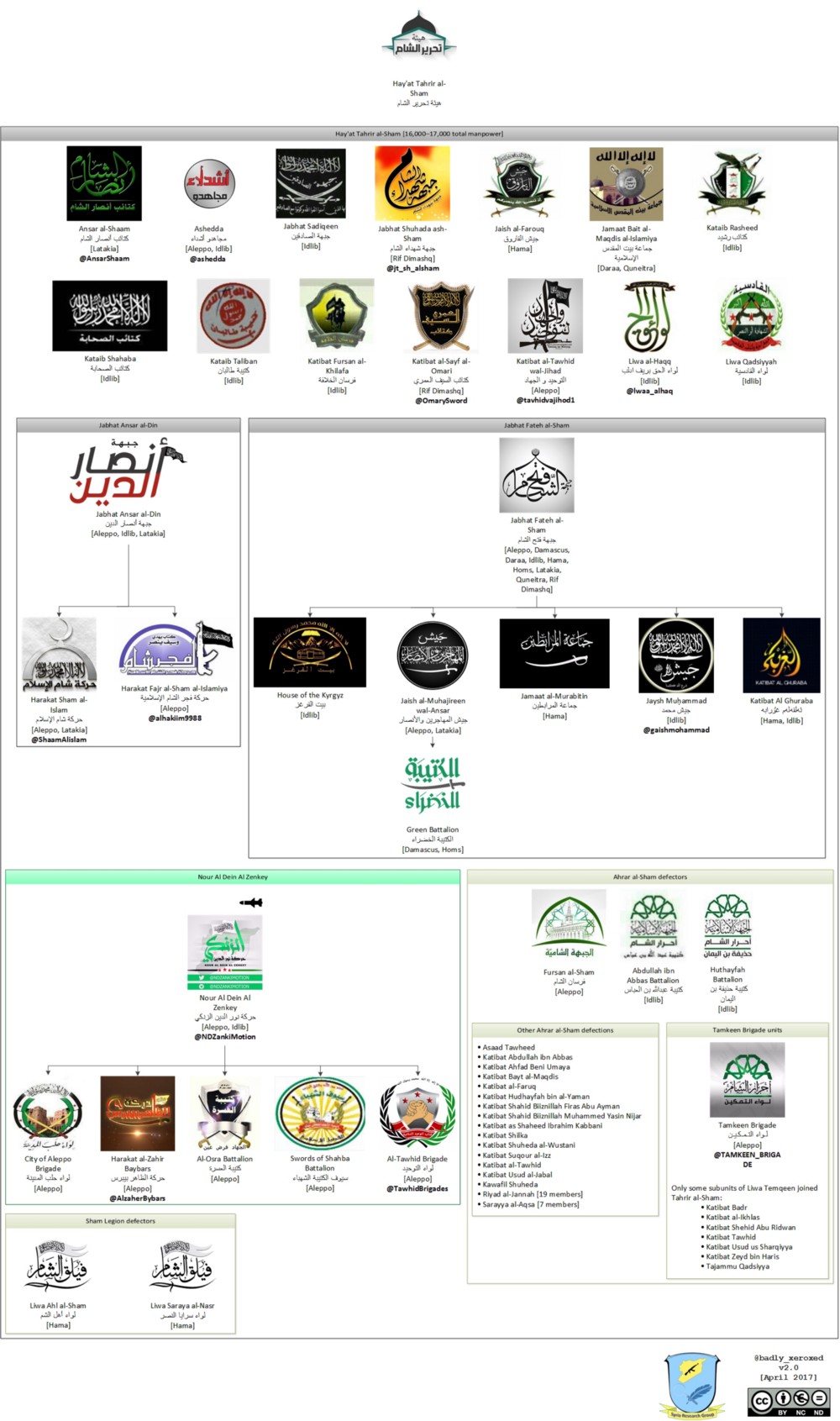
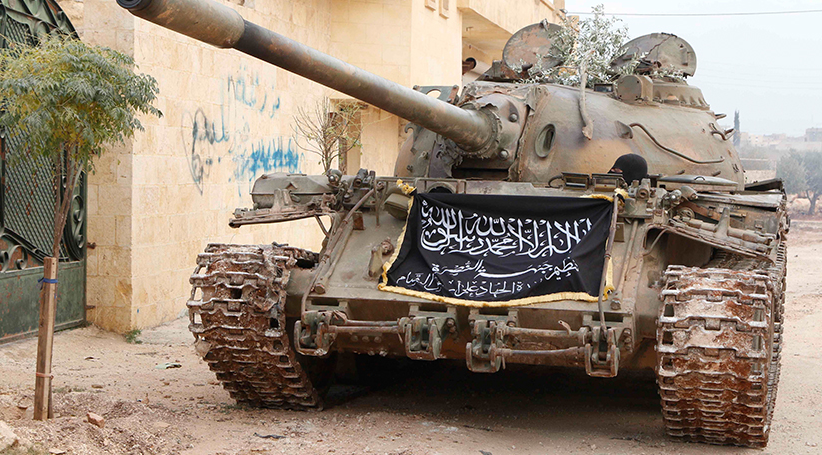


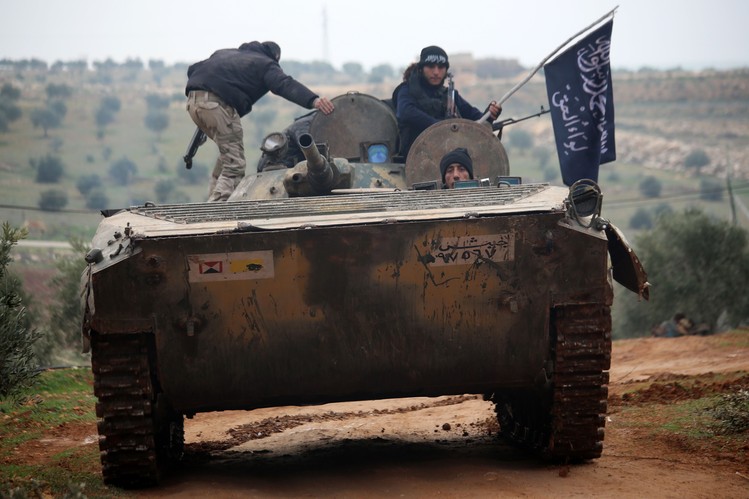
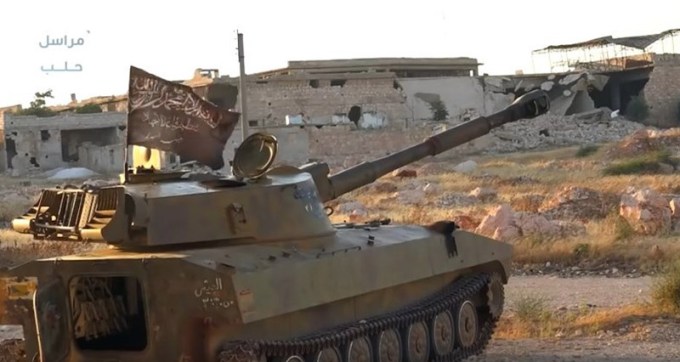
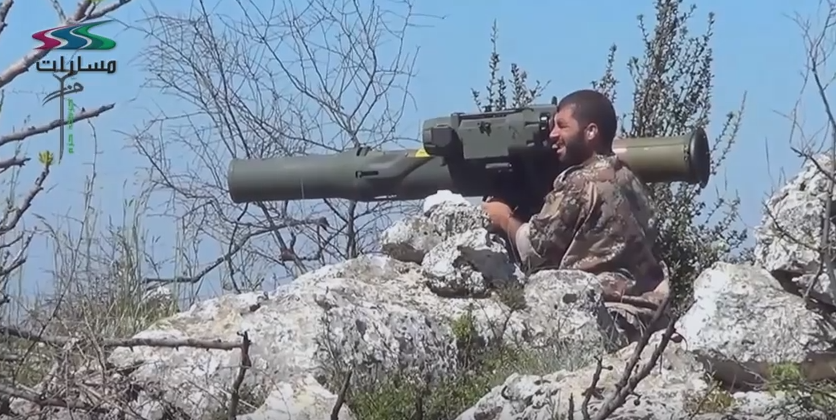
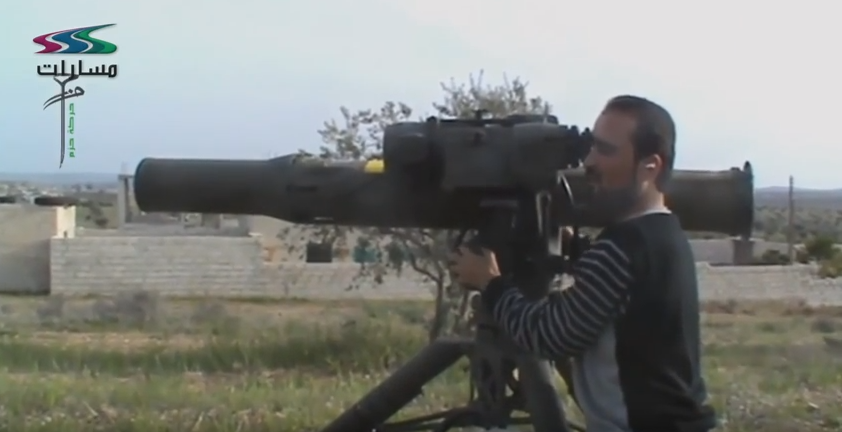
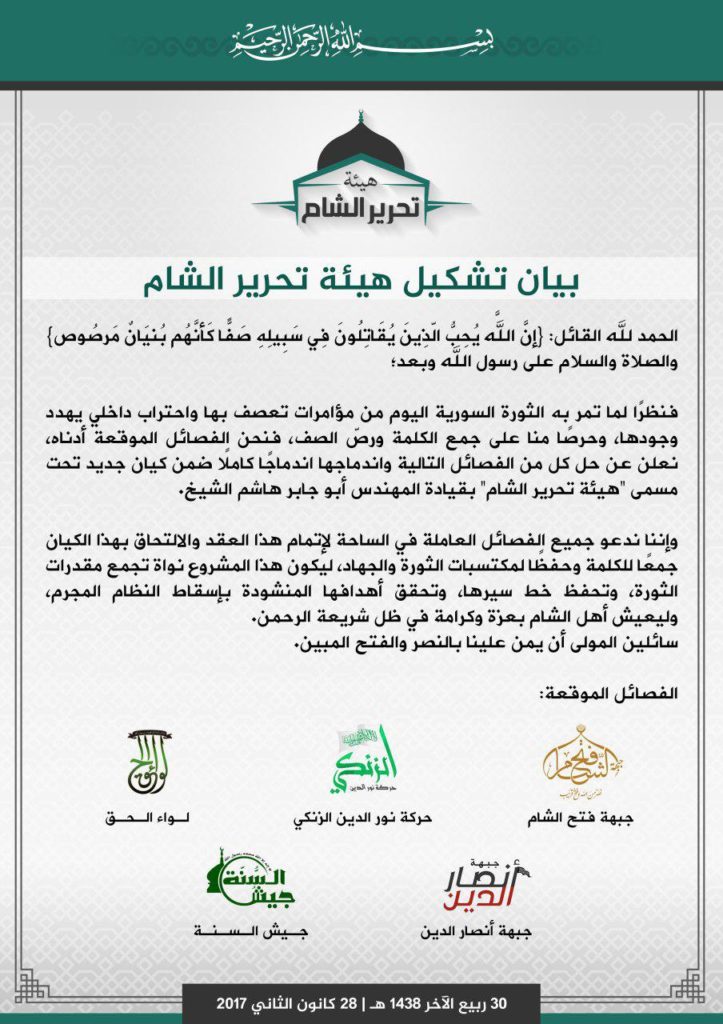





Excellent piece. Next should be SDF and it’s current rebranding.
I would support that, even more so if it were to include the underreported HXP
Outstanding report. Thank you. Spacibo
Massive amount of information, thank You.
Looking at the map of the de-escalation zones, it strikes me that mostly those are the areas where SAA is attacking more or less anybody living there, causing untold victims among the civillians living there.
Or is the meaning of de-escalation “do not attack SAA but wait to be attacked”?
I am relatively sure that this was more or less the reasoning of AAS for attacking the Harasta base
One of the few really good (mostly neutral) contributions of this side …more of that.
Might be helpful to keep to the English translation of all these opposition groups – it’s just quite difficult to keep all these Arabic names in mind… besides the fact that using Arabic names alienates the reader.
HTS= Henchmen/Traitors/SADISTS SUPREME; The majority populaltions of Iraq and Syria would rejects their sadist arses! Wahabhist wankers!
Best Report!